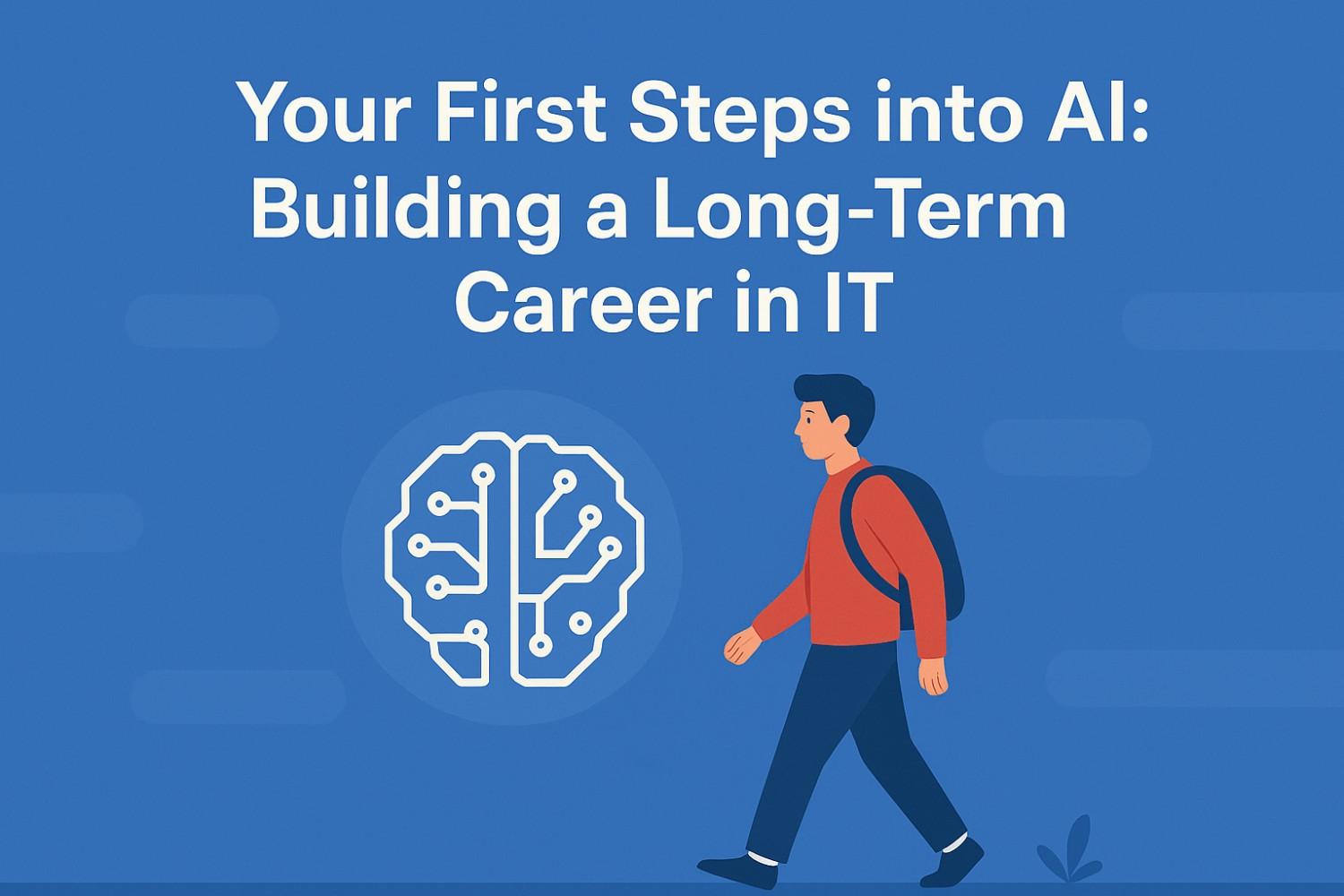Artificial Intelligence (AI) is not just a buzzword anymore — it’s the driving force behind modern technology. From chat assistants and fraud detection systems to image recognition and self-driving cars, AI is changing how industries operate. For developers, the challenge is clear: it’s no longer about whether to learn AI, but how to begin and where to focus in order to stay future-ready.
If you’re a developer who wants to prepare for the future, this guide will walk you through the fundamentals and provide a step-by-step 6-month plan to become confident in AI.
1. Get Familiar with the Core Ideas
Start by understanding what AI really means. Think of it as teaching machines to solve problems, adapt, and improve with experience. AI has several branches:
- Machine Learning (ML): Systems that learn patterns from data.
- Deep Learning (DL): Advanced ML using neural networks, inspired by the human brain.
- Natural Language Processing (NLP): Helping machines understand human language.
- Computer Vision (CV): Teaching systems to interpret images and videos.
Helpful Math Areas:
- Basics of linear algebra (vectors, matrices)
- Statistics & probability (distributions, mean, variance)
- Calculus basics (gradients, optimization)
2. Strengthen Programming Skills
AI relies heavily on programming. Among all languages, Python is the best starting point because of its simplicity and the number of AI frameworks available.
- If you’re new: Start with Python basics, then move to libraries like NumPy, Pandas, and Matplotlib.
- Other useful languages: R (for analytics), C++/Java (for performance-focused systems).
👉 As a developer, focusing on Python first will give you the fastest progress.
3. Explore AI Frameworks and Tools
Once you’re comfortable with Python, begin working with AI-specific libraries. These make complex tasks easier:
- Scikit-learn → Great for classical ML tasks like classification and regression.
- TensorFlow and PyTorch → Popular deep learning libraries.
- Keras → Beginner-friendly wrapper for deep learning.
For domain-specific work:
- NLP → NLTK, SpaCy, Hugging Face
- Computer Vision → OpenCV, YOLO
4. Learn by Practicing With Data
Theory won’t be enough — use real datasets to practice. Start with small projects:
- Predict sales or prices from past data.
- Classify emails as spam or safe.
- Build a chatbot with simple responses.
- Create an image classifier for basic objects.
5. Understand Cloud-Based AI
Modern AI is deployed on the cloud. Get comfortable with at least one platform:
- AWS (SageMaker, Rekognition, Comprehend)
- Google Cloud AI tools
- Microsoft Azure AI services
Cloud AI lets you scale projects and handle large datasets without expensive hardware.
6. Build and Showcase Projects
Employers and clients value proof of skills. Start publishing small projects on GitHub or your portfolio site. Examples:
- Movie recommendation engine
- Customer support chatbot
- Sentiment analysis tool for tweets
- Face detection system
7. Keep Yourself Updated
AI moves fast. To stay current:
- Follow AI blogs and newsletters.
- Participate in Kaggle competitions.
- Join developer communities.
- Experiment with new tools like LangChain, OpenAI APIs, or open-source LLMs.
A 6-Month Roadmap to Learn AI
Here’s a practical 6-month learning plan for developers:
Month 1: Basics
- Learn Python with focus on NumPy, Pandas, Matplotlib.
- Revise math foundations: vectors, probability, statistics.
- Understand ML concepts: supervised vs. unsupervised learning.
Goal: Be able to analyze datasets and run simple algorithms.
Month 2: Core ML
- Work with Scikit-learn.
- Implement regression, decision trees, clustering.
- Apply models to small datasets (e.g., predicting stock prices).
Goal: Train and evaluate traditional ML models.
Month 3: Deep Learning
- Learn how neural networks work.
- Practice with TensorFlow or PyTorch.
- Build models for image and text classification.
Goal: Gain confidence in deep learning basics.
Month 4: Specialization
- Pick a focus: NLP (chatbots, text analysis) or Computer Vision (image/video tasks).
- For NLP: work with tokenization, embeddings, transformers.
- For CV: study convolutional neural networks, object detection.
Goal: Build a working domain-specific model.
Month 5: Deployment and Cloud
- Deploy models using Flask or FastAPI.
- Learn containerization basics with Docker.
- Try deploying a model on AWS, Google Cloud, or Azure.
Goal: Make your models usable as web services.
Month 6: Final Projects & Portfolio
- Build 2–3 projects (examples: AI chatbot, recommender system, face recognition).
- Document and share on GitHub.
- Compete in Kaggle or hackathons.
Goal: Have a portfolio ready to show employers/clients.
Conclusion
AI is transforming the IT landscape, and developers who don’t adapt risk falling behind. The good news is: with structured learning and hands-on practice, you can acquire AI skills in a short time.
By following this 6-month roadmap, you’ll move from beginner to job-ready, with real projects that showcase your expertise. Remember, the formula is simple: Learn, Practice, Deploy, Share.



